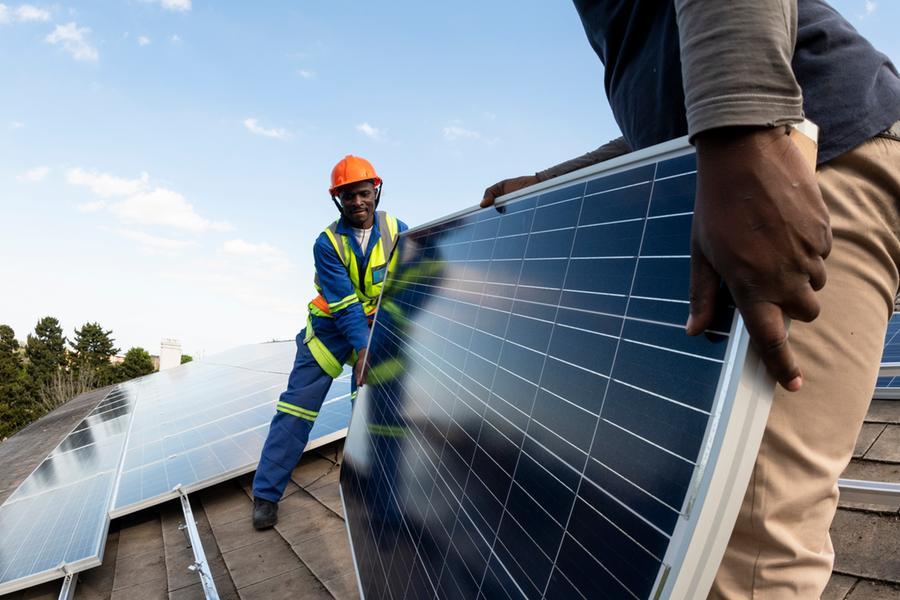
Gambia is fast-tracking the modernisation of its energy infrastructure through major investments in grid expansion, rural electrification, and renewable energy integration, according to the West African Country’s Petroleum and Energy Minister Nani Juwara. The country is leveraging strong government backing and multilateral support to transform its energy landscape and achieve universal electricity access.
First High-Voltage transmission line
In February 2025, Gambia inaugurated its first national 225kV high-voltage transmission and distribution (T&D) infrastructure connecting the cities of Brikama and Jabang in the Greater Banjul Area.
Developed as part of the Gambia Electricity Restoration and Modernization Project (GERMP), the T&D project includes the country’s first National Control Centre (NCC) equipped with a state-of-the-art SCADA system at Brikama and a 225/33kV sub-station in Jabang.
The new line is also part of the OMVG Interconnection Project, linking the national grids of Senegal, Gambia, Guinea-Bissau, and Guinea. The initiative aims to promote regional energy trade and improve grid reliability across West Africa.
“This critical infrastructure upgrade strengthens our ability to transmit energy efficiently across the nation, establishing a strong foundation to meet our growing energy demands while paving the way for a fully integrated energy management system,” Juwara stated while speaking at the Middle East Energy 2025 show in Dubai
“Gambia stands at a pivotal moment of opportunity and progress, with energy infrastructure serving as a beacon of hope and prosperity for future generations. We want our energy future to be shaped by the synergy of innovation and technology,” he said.
Renewable energy push
Gambia is still in the early stages of scaling up its renewable energy capacity. The country’s first utility-scale solar PV plant, featuring a 23MW solar array and 8MW battery energy storage, is powering 18,500 households.
“We are tapping into Gambia’s abundant renewable energy potential, harnessing solar radiation and other natural resources. Integrating renewables with advanced battery energy storage systems represents a strategic step toward energy decarbonisation, diversity, and resilience,” explained Juwara.
He emphasised that the country’s renewable journey is financed and supported by global institutions including the World Bank, the European Union, European Investment Bank, and African Development Bank. The European Investment Bank and the European Union have collectively invested over $100 million in the country’s renewable energy sector, supporting solar electrification for schools and health centres.
“We are building a strong foundation for renewable energy in education and healthcare by solarising over 1000 schools and 100 health facilities, ensuring that our essential services remain uninterrupted and environmentally sustainable. We are also expanding green mini grids to provide affordable electricity to rural communities,” Juwara said.
Soma solar power project
One of Gambia’s bold initiatives in solar energy is a 150 MW solar power plant project in the Soma region. In October 2024, the National Water and Electricity Company (NAWEC) and the Ministry of Petroleum and Energy issued a tender for the first 50 MW phase of the project under the public-private partnership (PPP) model. The selected partner will finance, construct, and operate the Independent Power Producer (IPP) project.
“We aim to scale up this project by an additional 100 MW in the future. This initiative will not only enhance our green energy output but also strengthen PPPs in Gambia,” Juwara said.
Towards universal access to electricity
Gambia’s Electricity Roadmap (2021-2040) serves as the primary planning instrument and a strategic reference point for all stakeholders in the sector, outlining the necessary steps to achieve the country’s 2025 Universal Access target.
A key part of the roadmap is developing the West African Power Pool (WAPP) regional grid, which will strengthen Gambia’s electricity system by connecting it to neighboring countries, enhancing energy security and trade. The roadmap also aligns with the Mission 300 agenda, an ambitious continental initiative led by the African Development Bank, World Bank, and other partners to provide electricity access to over 300 million people across Africa.
“As a small country, we have big ambitions,” said Juwara, adding that the country is on track to achieving its target of providing universal electricity access by late 2025 or early 2026.
“We are revising our Renewable Energy Act and Electricity Act to adapt to technological advancements, ensuring a legal framework that fosters innovation while safeguarding our citizens. Additionally, we are formulating a new energy policy that embraces innovation, technology, and digitalisation,” the Minister concluded.
(Reporting by Dennis Daniel; Editing by Anoop Menon)
(anoop.menon@lseg.com)
Subscribe to our Projects’ PULSE newsletter that brings you trustworthy news, updates and insights on project activities, developments, and partnerships across sectors in the Middle East and Africa.










